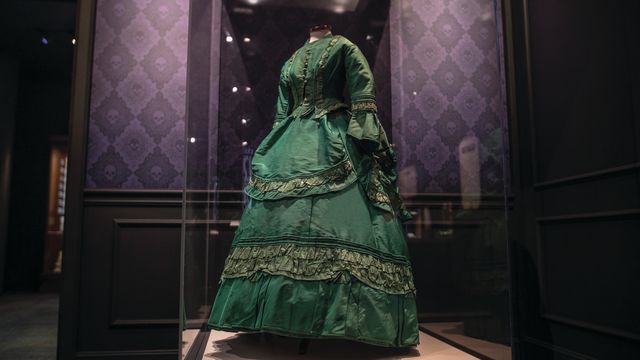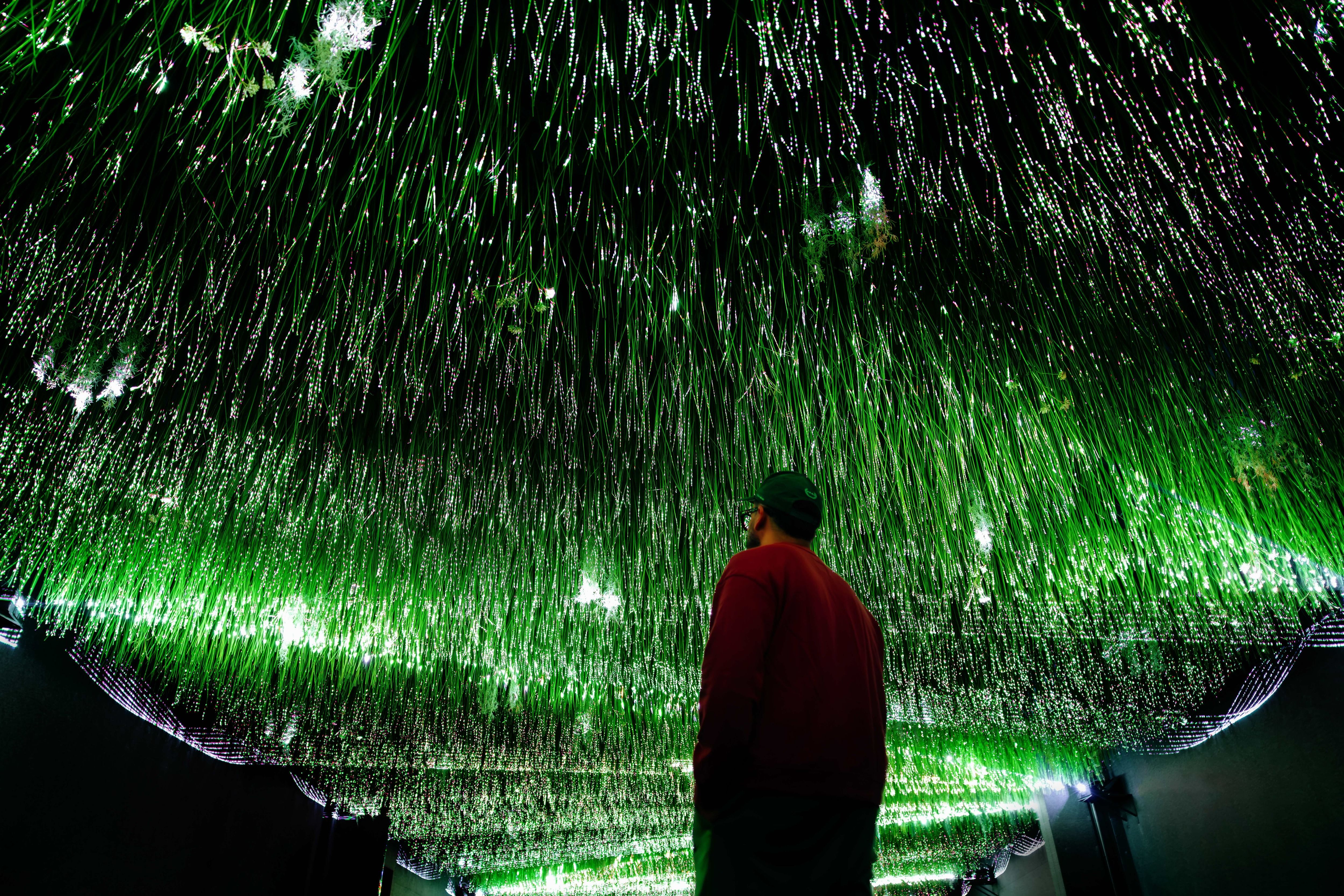This HMNS Exhibit Details All the Ways You Could Die

Image: Courtesy of HMNS
“The Radium Water Worked Fine, Until His Jaw Came Off.” The 1932 demise of one Eben Byers, condensed into a memorable 1990 Wall Street Journal headline, anticipated the delicate task that, one day, would be undertaken by the creators of “Death by Natural Causes”: to stock a museum gallery with lethal agents embedded in everyday life—in the pantry, in the garden, in the bathroom—tastefully, but with a touch of humor.
Visitors to the Houston Museum of Natural Science’s latest exhibit may be pleasantly surprised by how well co-curator David Temple and his collaborators pull it off. In Byers’s case, they’ll see a vial of the radioactive tonic—sold as a health drink and aphrodisiac—that ultimately did him in, but not a photo of the early-20th-century industrialist/bon vivant missing his jaw.
“I saw that image and wish I didn’t,” shudders Temple, the museum’s associate curator of paleontology. “We do tell that story, but we don’t go there. A lot of this is educational. We’re not trying to go for the total gross-out effect.”
All paths lead to the grave, as the saying goes, and here “natural causes” means almost anything. There are displays on one benighted fellow who shot up a saguaro cactus until it fell over and crushed him, as well as Nobel-winning scientist Marie Curie, who discovered radium and polonium but perished from long-term radiation exposure. A glowering stuffed bear near the entrance, meanwhile, prompts Temple to explain how a coroner might log a bear attack as “exsanguination.” We might just say “bleeding to death.”

A lovely shade of green derived from arsenic
Image: Courtesy of HMNS
The extent of products on display made from toxic materials—paints, glassware, ceramics, clothing—is flabbergasting. One dress from 1871, on loan from a Civil War museum in Fort Worth, endangered the life of any woman who wore it because the pigment making it such a lovely shade of green was derived from arsenic. And yet men and women knowingly took such risks all the time.
“People will do anything for fashion,” says Temple, “and in the late 19th century it was the same thing.”
There’s also a section on the “Radium Girls,” Depression-era factory watchmakers whose hazardous working conditions—they were charged with painting watch dials using radium-based paint—led to the formation of the Occupational Safety and Health Administration. It’s inspiring, in its own morbid way.
The aesthetics are engaging, too. The layout is patterned after an Addams Family–style Victorian house whose wallpaper pattern incorporates spiders, snakes, and scorpions. (Inevitably, their live counterparts are here too.) Local artists have re-created the ancient Laocoön sculpture, in which a Trojan priest and his sons are attacked by giant serpents.
Elsewhere, an arcade-style fortune-teller computes visitors’ life expectancies, and a magician on video helps translate just how remote the odds of a fatal shark attack or lawn-mower accident really are. Part of the exhibit’s goal, explains Temple, is to debunk the myths associated with such grotesque deaths.
The reality is much more mundane—and unsettling.
“We want to let people know where there’s hidden dangers,” he says. “You’re exposed to a lot more danger in your daily life that you just don’t think about.”
Death by Natural Causes. Thru Sept 3. Members $12; non-members $30. Houston Museum of Natural Science, 5555 Hermann Park Dr. 713-639-4629.




